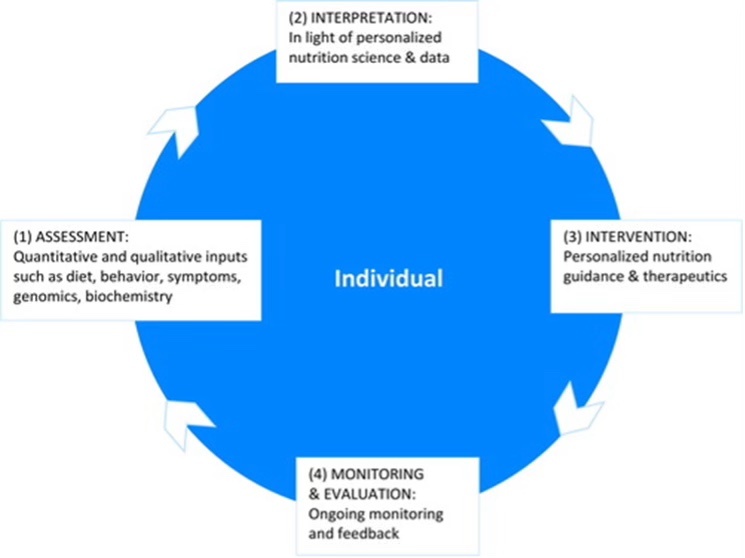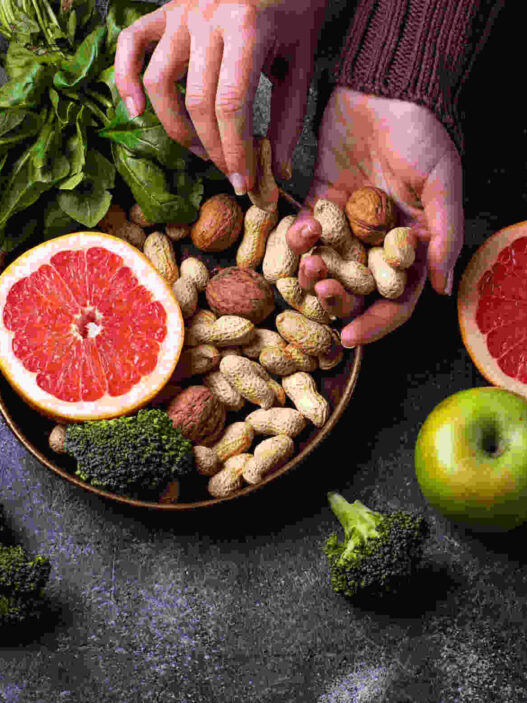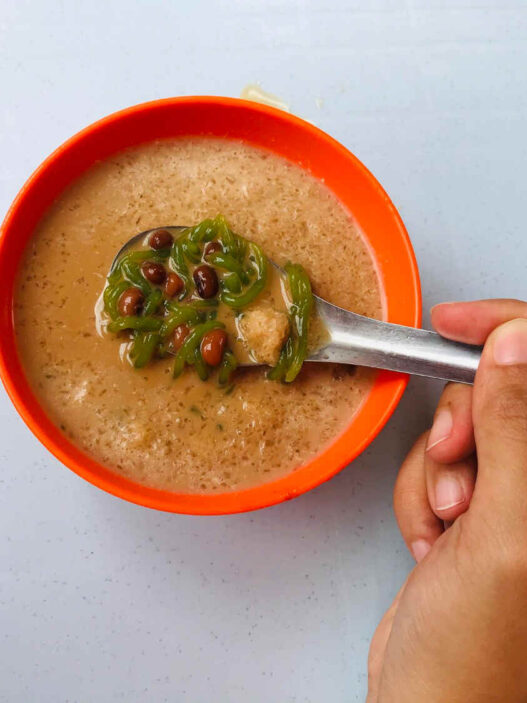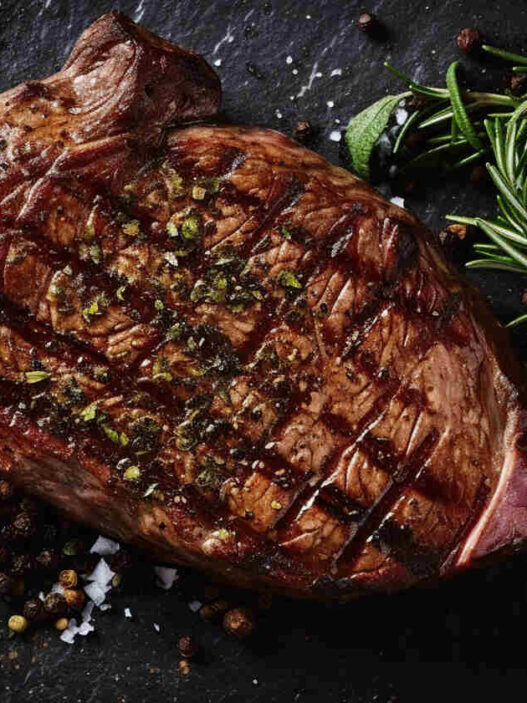What is Personalised Nutrition (PN)? Let us understand the science of personalised nutrition or PN, a science beyond one-size-fits-all and its role in your health and wellbeing, the various elements of PN, approaches and challenges.
Nutrition, essential for our health and development, is one of the most important determinants of health and is potentially modifiable on an individual basis.
The history of humanity is the history of eating habits; major changes such as the creation of the first tools, the ingestion of meat, the control of fire and other evolutionary events have been associated with anatomical, physiological and pathophysiological, and behavioral changes. In turn, these eating habits have been modified by biological, environmental, technological, sociocultural (dietary and environmental exposures, co-evolution, individual variability, microbiome and gut health) and behavioral factors.
The history of evolution shows that, for thousands of years, the human organism has been omnivorous and genetically adapted for times of food shortage, developing profound changes at the genetic level, microbiome, metabolism, etc. that in those conditions were “advantageous” (being metabolically efficient) but in the current era, in which there is an abundance of foods rich in calories, unhealthy fats and refined sugars, etc. These changes have become “maladaptive”, which has led to the appearance and consolidation of many of the so-called non-communicable diseases (NCDs): cardiovascular diseases, type II diabetes mellitus, obesity, cancer, mental disorders, etc.
To these changes, we must add those produced by the so-called endocrine disruptors, which are exogenous substances or mixtures that alter the function of the endocrine system and, therefore, cause adverse health effects in an intact organism or its progeny, or in the population, present in our food, hygiene products, cosmetics and in the environment; as well as the increased sedentary lifestyle and the increase in stress factors induced by globalization.
Food is always present in our daily lives and eating seems to be a simple activity; but it is an intricate behavioral process involving about 200 decisions a day. Eating behavior depends on both conscious and unconscious decisions (eating habits and environment: external influences that can modify nutritional behavior). Social bonds have the capacity to modify eating habits, but the specific mechanisms have not yet been defined: these include social norms, social support, social comparison or behavioral modeling. The beliefs, values and behaviors shared within a group (culture) determine more than millions of years of evolution, both the dietary pattern and the lifestyle of that group. There is a dominant position of culture over natural evolution.
Eating does not only involve the moment of food intake, but three phases have been defined:
Exposure: social norms, from a food point of view, are formed by the everyday things we perceive in the environment (type of food, schedules, etc.).
Access: group of foods that we can actually access and that are socially accepted.
Choice: selection and acquisition of food.
Consumption: foods we eat at different times of the day.
Traditionally, the mechanisms by which food affects our organism have been divided into two groups:
- Those mediated by nutrients (nutrient metabolism, epigenetic mechanisms and circadian clocks (biological centers that regulate the sleep-wake cycle, as well as the activity of hormonal axes, cellular regeneration, immunological, etc.); and
- Diet-sensitive effectors (including the diet-endocrine, diet-immune, diet-gut, diet-senescence and diet-nerve axes).
The simultaneous use of omic sciences (sciences that allow the study of many molecules involved in the structure and functioning of a cell-organism or organisms in a particular environment: genomics, transcriptomics, proteomics, metabolomics, epigenomics, etc.) is expanding the level of knowledge and offering a more comprehensive view of these mechanisms. Based on the above, it is also recognized that dietary interventions produce beneficial effects of a systemic nature that allow us to enhance our state of health. (Fig. 1)

Fig 1. Effects of dietary interventions on health and various disease states. Wu, Q., Gao, Z. J., Yu, X., & Wang, P. (2022). Dietary regulation in health and disease. Signal transduction and targeted therapy, 7(1), 252. https://doi.org/10.1038/s41392-022-01104-w
Despite the recognition of the importance of nutrition for health, nutrition education along with public and preventive health education and mental health, is insufficient in medical and health care provider training in general, resulting in its underutilization and, consequently, lack of confidence in the implementation of effective nutritional strategies. In addition to this, the conventional health approach in which health personnel have been trained and developed in recent decades has been directed at acute and other unicausal diseases, but we see that this approach is inadequate for chronic multicausal diseases with multisystemic involvement.
What is Personalised Nutrition (PN)?
Different governmental and international institutions have been providing a series of general dietary recommendations and guidelines to the population for decades, with the aim of improving the nutritional level of populations. These guidelines differ according to the gender and age of the target population and special groups (pregnant women, vegetarians, athletes or people with chronic diseases).
These general dietary guidelines and recommendations (“one size fits all”) have been partially effective in their objective: current statistics show that rates of nutrition-related diseases continue to increase (malnutrition, obesity and other NCDs). This may be due to the presence of individual or population group variability in response to the same nutritional intervention, that general recommendations are biased towards specific cultures and population subgroups, or poor adherence to the recommended guidelines.
For this reason, the concept of Personalized Nutrition (PN) is beginning to be developed as a new field of study, based on the so-called omics, and aimed at improving health and well-being with optimized nutritional recommendations, specific and adapted to the individual or population group that shares certain common characteristics (population stratification).
In general, there is no absolute consensus among scientists as to the definition of personalised nutrition, PN and, on many occasions, the term Precision Nutrition is also often used as a synonym for this approach. For the practical purposes of this paper, we will use the following definitions:
Personalised Nutrition
Personalised nutrition, PN, is a field that leverages human individuality to drive nutritional strategies that prevent, control, treat disease and optimize health. It is a collective approach that uses information on individual characteristics to develop nutritional advice, products or services.
Precision Nutrition
Precision nutrition approach is individual, requires a higher degree of scientific certainty and attempts to understand the relationships between the individual, his or her diet and intrinsic characteristics (phenotype [observable physical, biochemical, or behavior characteristic of an individual], genome, microbiome, proteome, metabolome, etc.) to provide beneficial nutritional advice or interventions at the personal level. It can be said to tailor dietary recommendations to specific biological requirements based on individual health status and goals.
This new field of study has the following characteristics:
- It has emerged and developed in the last two decades.
- It is deeply rooted in scientific evidence.
- It is based on advanced and innovative technologies, as well as on the training of skilled professionals.
- It is multidisciplinary, using knowledge and its integral application from the omic sciences, medicine, nutrition, systems biology and behavioral sciences.
Elements of Personalised Nutrition
The elements of personalised nutrition (PN) are defined by the omic sciences:
Personalised Nutrition, PN research
Personalised Nutrition, PN education
Practice of Personalised Nutrition, PN
In the personalised nutrition, PN approach, the individual is at the center of the care process and interventions are developed with objective information from different studies (anthropometric, metabolic, biochemical and other omic studies), in addition to subjective data such as personal and family history, environmental context, social and behavioral factors, culture and beliefs, and individual preferences, in order to drive changes in dietary behavior in conjunction with other lifestyle factors. This diverse and extensive information can be integrated with the help of state-of-the-art computer technologies and the application of the systems approach to generate personalized advice (fig. 2).

Fig 2. Data from any of these feature elements can be integrated into machine learning models and used to generate personalized nutritional advice. Font: Kirk, D., Catal, C., & Tekinerdogan, B. (2021). Precision nutrition: A systematic literature review. Computers in biology and medicine, 133, 104365. https://doi.org/10.1016/j.compbiomed.2021.104365
Personalization can be based on two aspects:
- Biological evidence of different responses to foods/nutrients dependent on individual characteristics (genetic, phenotypic, microbiome, epigenetic, etc.).
- The analysis of personal behavior, goals, preferences, and barriers to, from there, develop and implement strategies to enable changes and improvements in eating patterns.
The cognitive process to elaborate these recommendations goes through 3 levels:
- Level 1: traditional diet based on general recommendations.
- Level 2: adding information on phenotype (anthropometry, body composition, metabolic and biochemical study), characteristics of dietary intake, physical activity, behavioral factors, sociocultural factors, individual beliefs and preferences.
- Level 3: transferring information from omics test results (with adequate validation) to clinical practice, with subsequent personalized recommendations.
By understanding complete information, reflecting the totality of each patient’s particular circumstances, the practitioner will be able to intervene at any stage: prevention of disease, emergence of subclinical symptoms, development of disease and/or improvement of overall health and well-being.
A change in the decision-making framework will be helpful; moving from traditional clinical effectiveness to shared decision-making between provider and recipient. An intervention involving the latter framework will be more personalized and may lead to greater acceptance and adherence. We should give more relevance to the development of behavioral and motivational strategies at the individual level and in populations that share common characteristics.
Personalised Nutrition Model of Care
The PN model of care is cyclical, and its components are as follows (Fig. 3):
Assessment
Collection of individual-specific information, objective data (phenotype, genotype, metabolic and body composition studies, biochemical tests, biomarkers, microbiome data, epigenetic markers) that are combined with exercise-sleep data, clinical symptoms of disease or impairment, and behavioral information (sociocultural preferences, motivation, behavioral patterns, presence of possible disorders, etc.). The level of personalization depends on the strength and extent of the available data.
Interpretation
It is performed based on scientific evidence. A capacity for synthesis and integration of information is needed, as well as a global vision of the patient to determine the possible nutritional interventions that we can perform on the patient according to their individual needs and that can improve their health status; with greater understanding, adherence and persistence in the change obtained. The large amount and complexity of data collected from various sources (“big data”) will require the coordinated work between state-of-the-art technologies, machine learning, artificial intelligence (AI) and the application of the systems approach to achieve a more specific and personalized guidance.
Intervention
The project is carried out with the interventions that we consider most effective and that are also supported by scientific evidence, to try to remedy the root causes of the problem and promote a change in behavior. These interventions include personalized diets and recommendations to improve the context of eating (schedules, preparation, conscious eating, guidelines to avoid compensatory attitudes, etc.), exercise, sleep, and emotional and psychological counseling. It is important to establish objectives to foresee their achievement; for this purpose, an approach that has proven useful in this aspect is SMART (specific, measurable, achievable, realistic and time-based objectives). The patient’s participation is fundamental, both in goal setting and decision making, in addition to his or her intrinsic motivation to achieve the goals in a sustained manner over time.
Monitoring and Evaluation
It is essential to regularly and periodically evaluate the objectives, using methods that meet the validity criteria, to monitor progress quantitatively and qualitatively (based on the data obtained). Only in this way can we improve and perfect the interventions implemented to achieve self-efficacy, sustainable behavioral change and better health. Nutrition and eating behavior are elements that change over time in the same individual, as well as the circumstances that affect or modify them, so the interventions will also have to be adapted to these changes. The strategy must be adapted to the person instead of adjusting the person to the strategy.

Fig 3. Personalized nutrition care model. Font: Bush, C. L., Blumberg, J. B., El-Sohemy, A., Minich, D. M., Ordovás, J. M., Reed, D. G., & Behm, V. A. Y. (2020). Toward the Definition of Personalized Nutrition: A Proposal by The American Nutrition Association. Journal of the American College of Nutrition, 39(1), 5 –15. https://doi.org/10.1080/07315724.2019.1685332
Principles for Design & Implementation of PN Approaches
Suggested guiding principles for the design and implementation of PN approaches were proposed in 2018 by a group of scientists from various disciplines involved in PN research, development, and implementation convened by the International Life Sciences Institute (ILSI) – North America:
- Define potential users and beneficiaries.
- Utilize validated diagnostic methods and measures.
- Ensure data quality and relevance.
- Obtain data-driven recommendations from validated models and algorithms.
- Design NP studies around validated needs and health outcomes or individual functions.
- Provide rigorous scientific evidence of effect on health or function.
- Provide easy-to-use tools.
- Follow population-based recommendations for healthy individuals.
- Communicate potential effects transparently.
- Protect individual privacy and act responsibly.
Progress and Challenges of Personalised Nutrition
PN is not a new concept in our daily practice. In the past, we have already carried out some nutritional interventions specific to PN in “special” groups of patients who shared common traits (stratification), such as, for example, in the case of patients with phenylketonuria (genetic disorder) or pregnant women (due to the exceptionality of their physiological state). On the other hand, there is undoubtedly interindividual variability in response to feeding.
Since the first foundations and ideas of PN were laid in this 21st century, several studies have been conducted to evaluate it. Although the results are mixed, there is some consensus in accepting that PN has better results than the general approach in terms of improving diet quality, phenotypic markers of central adiposity, biochemical and microbiome markers, as well as achieving sustained and effective improvement in behavioral change at the individual level.
Nowadays, people are more interested in health problems and their management, which leads to the search for personalized solutions. This has allowed the growth of companies that provide personalized health and nutrition services, and an increasingly receptive market for these types of services. The use of mobile technologies (phones and other portable devices) is an effective and economical means of reaching more people. There are already some programs that offer personalized advice in the areas of nutrition, psychology and behavior change.
The vast amount of information (“big data”) arising from omics discoveries can now be managed thanks to advances in computer technology (machine learning and AI), allowing nutritional interventions to be designed that incorporate all the data.
PN, as a “new” discipline, has an eminently holistic approach and is included within the so-called applied sciences, which use information from various scientific disciplines such as formal sciences, social sciences and natural sciences, to solve practical problems that affect society. Many of the challenges of PN are due to its incipient creation, since it is a discipline that is still in a constant process of definition, research and development.
Some results of PN studies are disparate, either by the type of study (e.g., observational versus randomized-controlled), the study design (e.g., if they only evaluate the biological part or if they incorporate the emotional and habit part), the outcome measures (e.g., body mass index (BMI) instead of kg of fat mass or kg of muscle mass) or the duration of the study (they are of short duration due to high cost), to mention some of the reasons.
The factors that explain the differences between individuals, the intrapersonal differences and those that are maintained in the long term in the same person, such as those that depend on the environment that surrounds us, and those that can be inherited, have been discovered in the last decade and there is still a long way to go. These discoveries are shaping the growing theoretical basis of PN.
Another area for improvement is developing or adapting studies that truly assess individual response to nutritional intervention, since classic observational and randomized controlled studies assess group responses and do not encompass all the factors that affect nutrition. The measurement of results should also be carried out with methods that assess the individual (for example, it is accepted that the BMI represents a population measure, and the value of body composition or certain anthropometric indices (waist-hip or waist-height) is recognized as individual measures). On the other hand, it is observed that most studies that express favorable results of PN are those that consider psychological and behavioral factors in their design.
The results of the studies can be considered partial, as they are not focused on diverse ethnic and socioeconomic groups within the study design. In addition, as they were mainly conducted in the United States and Europe, the samples do not allow for a complete assessment of the existing genetic and microbiome diversity; therefore, the results of the studies cannot be extrapolated to other areas of the planet or to different ethnic or socioeconomic groups.
Training in PN is essential, for which it is necessary to define a solid theoretical basis that justifies this new discipline, but that also has the capacity to be updated as new scientific discoveries progress. The importance of the biological (and the hours of study) must be equal to that of the psychological and behavioral; the curative part is important, but so is the preventive and public health part.
The emphasis should be on the creation of critical criteria, synthesis and analysis, capable of understanding and comprehending all the factors involved in health; all this with the support of new technologies. Tools, interventions and protocols will be created, but it will be necessary to know when, how, on which patients and for how long to use them without causing physical or psychological harm to the patient. It is essential to remember that the main diagnostic tool we still have is listening to the patient (effective communication).
In developed countries (where these studies have been carried out), the growth of NCDs has led to most NP studies focusing on these pathologies. Public and private funding is allocated to studies of this type, without developing or addressing the problem of malnutrition in all its forms (calorie-protein or micronutrient).
Currently, there is a lack of regulation and insufficient evidence of its benefit, in the so-called direct-to-consumer tests, on which a large part of the commercial supply of PN depends. In addition, in NP, there are psychological, ethical, legal, economic, social and health system impact issues that are still being studied and defined.
Given the current perspective of global nutrition and the hope that the development of PN provides, it is considered imperative and urgent to prepare an international consensus document of recognized experts in PN and related areas.
This document should lay the theoretical foundations, the basic guidelines for its development and control, and define the areas of training of health personnel and research (for example, the general methodology in the design of PN studies or studies of economic, social and quality of life impact) to provide greater validity to this discipline and to address and resolve, in a consensual manner, those areas of greatest debate.
Sources
Bush, C. L., Blumberg, J. B., El-Sohemy, A., Minich, D. M., Ordovás, J. M., Reed, D. G., & Behm, V. A. Y. (2020). Toward the Definition of Personalized Nutrition: A Proposal by The American Nutrition Association. Journal of the American College of Nutritio n, 39(1), 5 –15. https://doi.org/10.1080/07315724.2019.1685332
Kirk, D., Catal, C., & Tekinerdogan, B. (2021). Precision nutrition: A systematic literature review. Computers in biology and medicine, 133, 104365. https://doi.org/10.1016/j.compbiomed.2021.104365
Ordovas, J. M., Ferguson, L. R., Tai, E. S., & Mathers, J. C. (2018). Personalised nutrition and health. BMJ (Clinical research ed.), 361, bmj.k2173. https://doi.org/10.1136/bmj.k2173
Renner, B., Buyken, A. E., Gedrich, K., Lorkowski, S., Watzl, B., Linseisen, J., Daniel, H., & working group “Personalized Nutrition” of the German Nutrition Society (2023). Perspective: A Conceptual Framework for Adaptive Personalized Nutrition Advice Systems (APNASs). Advances in nutrition (Bethesda, Md.), 14(5), 983–994. https://doi.org/10.1016/j.advnut.2023.06.009
Ulusoy-Gezer, H. G., & Rakıcıoğlu, N. (2024). The Future of Obesity Management through Precision Nutrition: Putting the Individual at the Center. Current nutrition reports, 13(3), 455–477. https://doi.org/10.1007/s13668-024-00550-y
Wu, Q., Gao, Z. J., Yu, X., & Wang, P. (2022). Dietary regulation in health and disease. Signal transduction and targeted therapy, 7(1), 252. https://doi.org/10.1038/s41392-022-01104-w.

Renzo Polanco, MD, is Medical Director of the Adelgar Clinic at Madrid, Spain. A physician by profession, he has received specialized training in International Public Health, Clinical Nutrition and Health Management. He has more than 20 years of experience in health care and health management. For about 15 years, he has been advising and supervising the control, monitoring and treatment of patients with nutritional and metabolic problems or pathologies in NGOs as well as in insurance companies and private clinics. He has been working with the concepts of Personalized Nutrition in his daily professional practice for almost 10 years.











